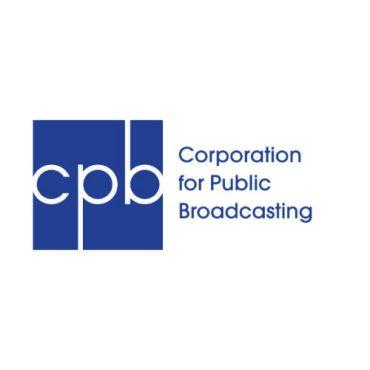A new study from the University of Colorado Boulder found that historically redlined districts in the Denver metro area have worse air quality.
Redlining, a discriminatory practice that became prominent in the 1930s until it was federally outlawed in 1968 under the Fair Housing Act, predominantly affected working-class and African American communities, pushing them out of wealthier neighborhoods.
KGNU’s Alexis Kenyon spoke with Alex Bradley, an atmospheric chemist at the University of Colorado Boulder, about his new study finding pollution in Denver continues to run along racial and ethnic lines.
-
 play_arrow
play_arrow
03_05_24_redliningairquality Alexis Kenyon
Alex Bradley: Starting out, we weren’t actually 100% sure we would be able to see all of the disparities. We know that air pollution disparities exist within almost every city because that’s been looked at before.
However, we were looking at large pollution sources to the north and east of Denver in the Denver Julesburg Basin, a large oil and gas operation. There are also large agricultural operations as well as wildfire emissions.
We weren’t sure if we’d be able to see these pollution disparities or if they’d all just be washed out by outside pollution sources. However, when we did look, we found these pollution disparities within Denver, and we found them along racial lines.
So, I like to say that the paper’s three main takeaways are that pollution is not distributed equitably among people of different races and ethnicities in Denver. The second main takeaway is that this is largely because of where people tend to live in Denver, which is dictated by historically racist policies, redlining, and neighborhood racial covenants. And then the third main takeaway is that a lot of this problem is actually due to cars and trucks on roads and highways around these affected areas.
Alexis: So you’re saying that rather than industrial polluters, the sources are actually traffic?
Alex Bradley: There are both. The pollution disparities in Denver are a combination of both polluters. We just found that traffic may be more than people realize.
How big of a disparity are we talking about? What did your study find?
Alex Bradley: Looking at the redlined districts, the neighborhoods to the north of Denver — Globeville, Elyria-Swansea, the whole of Commerce City — over an annual average, there is 13% more nitrogen dioxide in districts that were formerly redlined. And 13% doesn’t sound like a huge quantity, but you have to keep in mind that all of these districts are in the inner city, in the middle of the city, because that’s the extent of the city limits in the 1930s and ’40s. Also, this was calculated over an annual average, which doesn’t capture the day-to-day fluctuations that someone might breathe in, that could be much larger.
Alex Bradley: Considering the demographics of these areas and neighborhoods today, it’s been about 60 years since redlining was technically outlawed. Also, white millennials, unlike their parents, have really moved back into cities. Did we find a disparity in pollution in neighborhoods that may have once been redlined but now have been gentrified?
Yes, these neighborhoods are considerably nonwhite. I don’t remember the exact figure, but I believe up to 80 or 90% nonwhite. We looked very preliminarily at the effects of gentrification on this pollution trend and found that, in general, the areas that are being gentrified are the less affected ones.
Alexis: So your study found that highways that drive pretty much directly through these historically redlined neighborhoods are maybe the biggest reason why there’s such a disparity in air quality. But another major polluter in Denver is industry. Suncor, for example, is the over 100-year-old oil and gas refinery located right in the middle of Commerce City, a predominantly Black and Latino neighborhood. I’m curious if your study was able to really pinpoint any meaningful disparities in pollution coming from this refinery.
Alex Bradley: There is definitely meaningful pollution in these areas. Suncor sits kind of right in the middle of all of these affected neighborhoods. That’s not to say that Suncor is the main reason for all of this pollution, but they’re absolutely a contributor.
We’re not able to see the pollution from Suncor specifically because the satellite data just isn’t that robust. But looking into Suncor’s regulatory history myself, they have been in violation of the Clean Air Act for some time now, and so they’re absolutely part of the problem.
Personally, I think that it’s really strange to have an oil and gas plant situated in the middle of a city. But I also think it’s strange to have highways going through the middle of a city because they both contribute to this problem.
As for other sources of pollution in the area, an early iteration of this study was looking at Superfund sites, of which many of these former smeltery areas are now Superfund areas.
But there are a couple other ones in Denver, like the Rocky Mountain Arsenal, now a wildlife refuge, but it used to be a chemical weapons testing facility in the heart of Denver, and so that has been known to pollute the groundwater, as well as the former site of the Rocky Flats plant, more towards Broomfield, which was a nuclear weapons development facility that had several fires in the ’50s and ’60s, that led to plutonium being released across the area.
Is there anything else that you want to add?
Alex Bradley: “It’s really important to point out that this study is not at all going to be news to the people who live in these affected areas. The people who live there know that their air quality is worse.
They know the major sources of pollution around them. They know that they have worse health outcomes because of it. None of this is going to be new to them. The main thing that I want this study to be used for is there is not a large ongoing attempt to continuously monitor the air quality throughout the city, that I know of. This is an example of systemic racism, or structural racism, even.
I want this study to be put in the hands of these community members and community groups, as well as regulators and legislators to try and enact change to help fix this problem.



















